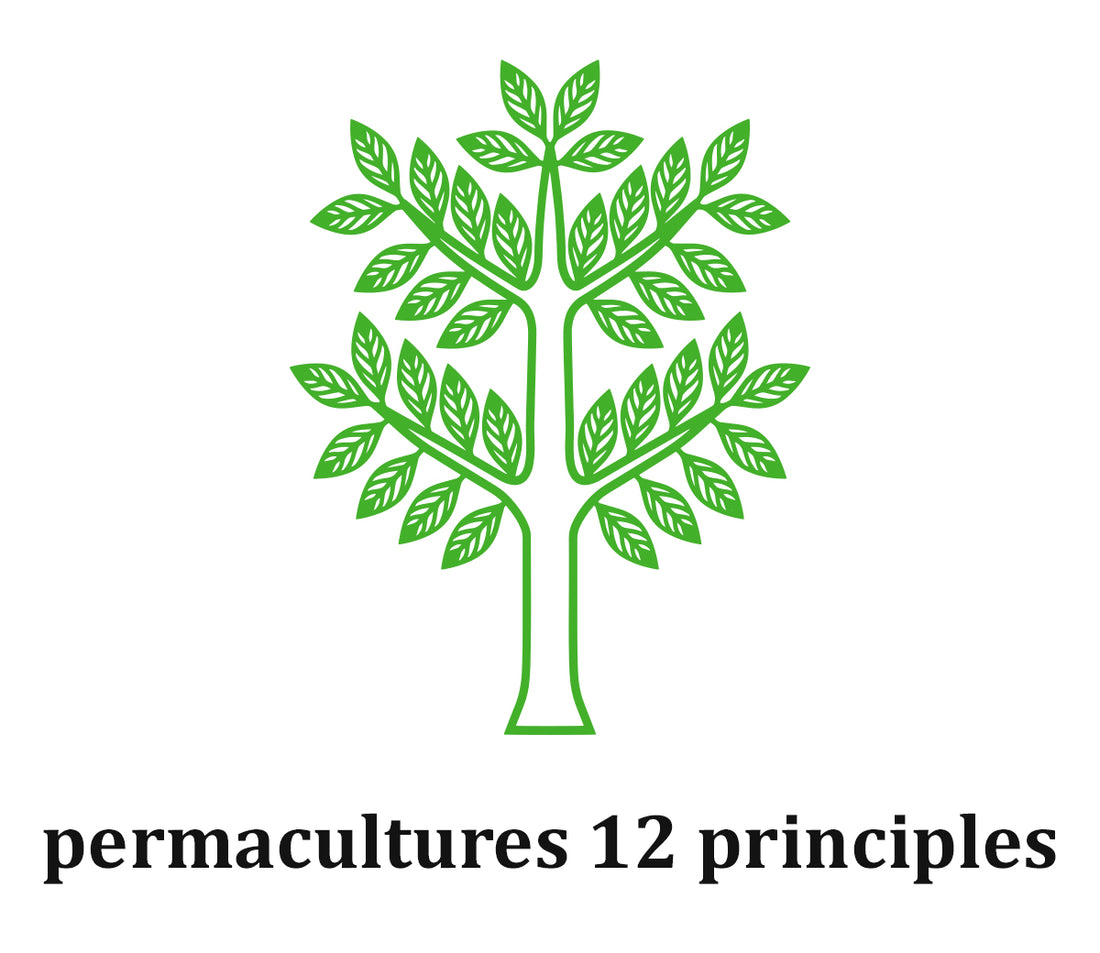Permaculture is a design philosophy for creating sustainable and self-sufficient human communities and ecosystems. This holistic approach to living is based on 12 principles that guide the design of a permaculture system, whether it's a small backyard garden or a large farm. By following these principles, we can create a harmonious relationship with nature and live in a way that is sustainable and regenerative.
-
Observe and Interact: The first principle of permaculture is to observe and interact with the natural world. This means taking the time to understand the patterns and relationships of the ecosystem and using this information to make informed decisions about the design of a permaculture system.
-
Catch and Store Energy: The second principle is to catch and store energy in the form of water, food, and other resources. This includes using techniques like rainwater harvesting, composting, and food storage to maximize the use of resources and reduce waste.
-
Obtain a Yield: The third principle is to obtain a yield from the permaculture system, whether it's food, fuel, or another resource. The yield should be abundant and sustainable, and the system should be designed in a way that maximizes the yield while maintaining the health of the ecosystem.
-
Apply Self-Regulation and Accept Feedback: The fourth principle is to apply self-regulation and accept feedback from the permaculture system. This means making decisions based on the needs and health of the ecosystem and adjusting the design as necessary to maintain balance.
-
Use and Value Renewable Resources and Services: The fifth principle is to use and value renewable resources and services, such as sunlight, wind, and water, instead of finite resources like fossil fuels. This helps to ensure the sustainability of the permaculture system and reduce our impact on the environment.
-
Produce No Waste: The sixth principle is to produce no waste, as waste is a sign of an inefficient and unsustainable system. Instead, everything should be designed to have multiple uses, and any waste should be recycled or repurposed.
-
Design from Patterns to Details: The seventh principle is to design from patterns to details, meaning that the permaculture system should be designed based on the patterns and relationships of the ecosystem, rather than just individual components.
-
Integrate Rather Than Segregate: The eighth principle is to integrate rather than segregate, meaning that the different components of the permaculture system should be designed to work together in harmony, rather than being isolated from each other.
-
Use Small and Slow Solutions: The ninth principle is to use small and slow solutions, meaning that the design of the permaculture system should be gradual and incremental, rather than relying on large and complex solutions.
-
Use and Value Diversity: The tenth principle is to use and value diversity, as diversity helps to maintain the health and resilience of the ecosystem. This includes diversity in crops, animals, and other components of the permaculture system.
-
Use Edges and Value the Marginal: The eleventh principle is to use edges and value the marginal, meaning that the edges of the permaculture system, where different elements come together, are valuable and should be utilized.
-
Creatively Use and Respond to Change: The final principle is to creatively use and respond to change, as change is inevitable and can provide opportunities for growth and improvement in the permaculture system.
In conclusion, these 12 permaculture principles provide a framework for designing sustainable and self-sufficient human communities and ecosystems. By following these principles, we can create a harmonious relationship with nature and live in a way that is sustainable and regenerative.
